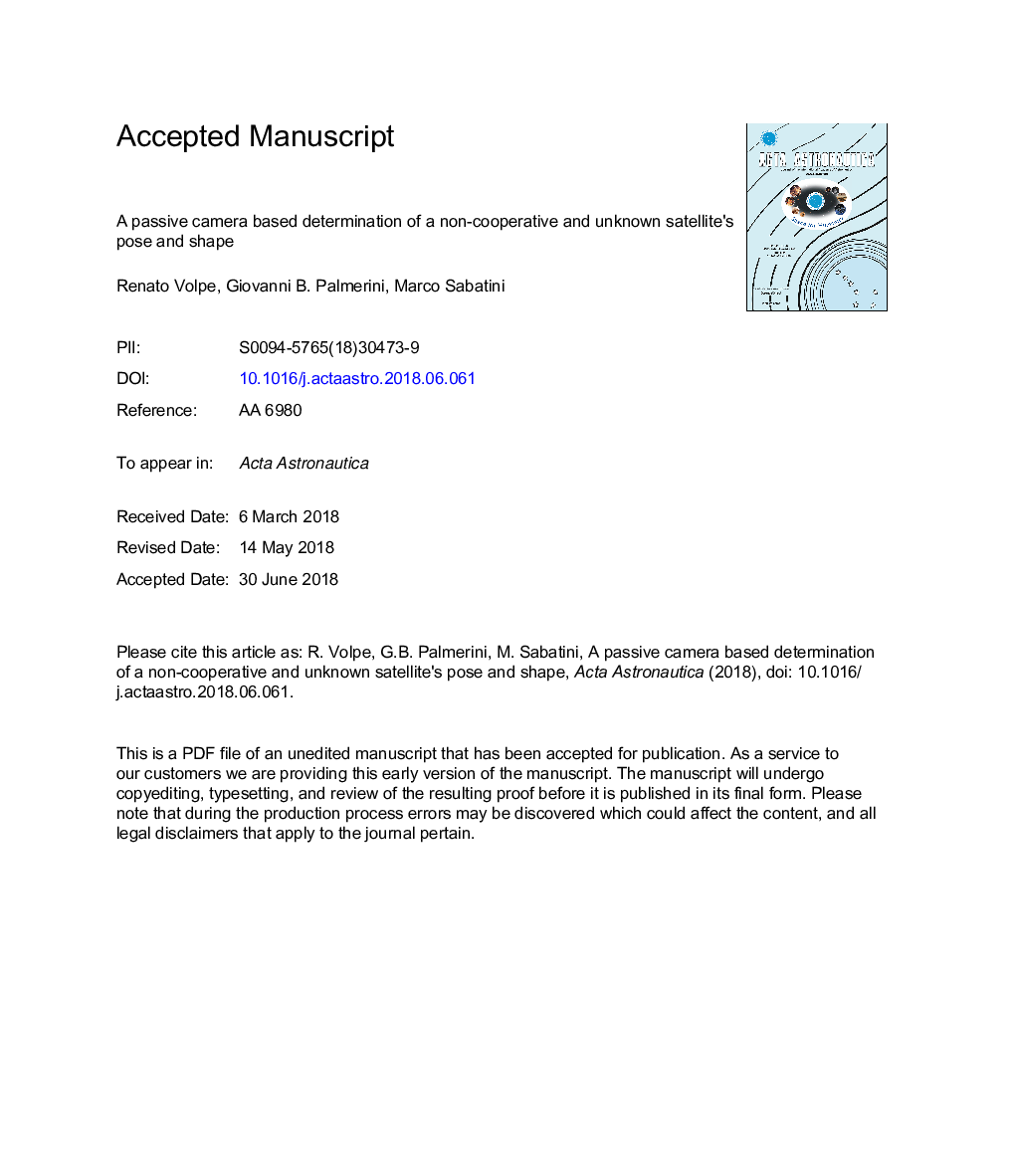| کد مقاله | کد نشریه | سال انتشار | مقاله انگلیسی | نسخه تمام متن |
|---|---|---|---|---|
| 8055454 | 1519904 | 2018 | 43 صفحه PDF | دانلود رایگان |
عنوان انگلیسی مقاله ISI
A passive camera based determination of a non-cooperative and unknown satellite's pose and shape
ترجمه فارسی عنوان
تعیین یک دوربین غیرفعال از شکل و شکل ماهواره غیر تعاونی و ناشناخته
دانلود مقاله + سفارش ترجمه
دانلود مقاله ISI انگلیسی
رایگان برای ایرانیان
کلمات کلیدی
موضوعات مرتبط
مهندسی و علوم پایه
سایر رشته های مهندسی
مهندسی هوافضا
چکیده انگلیسی
The relevance of autonomy in space systems during rendezvous and docking operations has been lately increasing. At the scope, a robust GNC architecture is required, which strictly relies on the navigation system's performance and must assure both high efficiency and safety, i.e. low errors and no collisions with the target satellite. One of the most explored fields is the optical navigation one. Using passive optical sensors such as cameras can give high benefit in terms of characterization of the observed scene, thus enlarging the consciousness of what is going on in the mission scenario. The present research investigates the development of a filter which can estimate the shape and relative attitude, position and velocity of a non-cooperative, possibly unknown satellite orbiting around Earth, observed by a camera and a distance sensor mounted on a chaser satellite, whose objective is to successfully complete a docking maneuver. The image taken at a certain time is processed, features are extracted from it and matched with the ones extracted from the image at the previous time step. The matched features along with the relative distance measured by the distance sensor are merged inside an unscented Kalman filter, which predicts, updates and improves the state's estimate throughout the iterations. The expedient used in the filter is to give a 3D characterization to the 2D features used as measurements. The filter estimates the 3D coordinates of these points, i.e. the target's shape, in the camera reference frame, which depend on the target's attitude dynamics and the chaser's relative orbital dynamics. Thus, the target's attitude parameters, i.e. the quaternions, and angular velocity vector, the relative position and velocity vectors and the tracked 3D points are all included in the state vector and estimated by the filter. Subsequently, the 3D point coordinates are determined in the body reference frame. By doing this for all the tracked points, a 3D map of the target can be built.
ناشر
Database: Elsevier - ScienceDirect (ساینس دایرکت)
Journal: Acta Astronautica - Volume 151, October 2018, Pages 805-817
Journal: Acta Astronautica - Volume 151, October 2018, Pages 805-817
نویسندگان
Renato Volpe, Giovanni B. Palmerini, Marco Sabatini,
